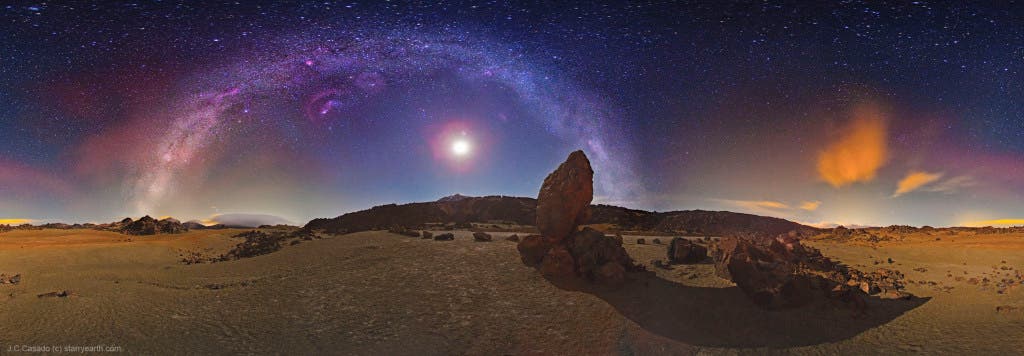Once again NASA‘s amazing “astronomy picture of the day” feature provides us with pure gold. The above captioned stunning photo (click on it and you’ll understand it’s splendor) was shot by astrophotographer Juan Carlos Casado during a clear night sky – the fully 360 across panorama was imaged by superimposing 9 separate photographs.
This how NASA astronomers explained how the phenomenon was captured on camera.
In a clear sky from a dark location at the right time, a faint band of light is visible across the sky. This band is the disk of our spiral galaxy. Since we are inside this disk, the band appears to encircle the Earth. The above spectacular picture of the Milky Way arch, however, goes where the unaided eye cannot. The image is actually a deep digital fusion of nine photos that create a panorama fully 360 across. Taken recently in Teide National Park in Tenerife, Canary Islands, Spain, the image includes the Teide volcano, visible near the image center, behind a volcanic landscape that includes many large rocks. Far behind these Earthly structures are many sky wonders that are visible to the unaided eye, such as the band of the Milky Way, the bright waxing Moon inside the arch, and the Pleiades open star cluster.
Also, be sure to check out the NASA annotated version of the panoramic photograph which has various constellations mapped in the skyline.










